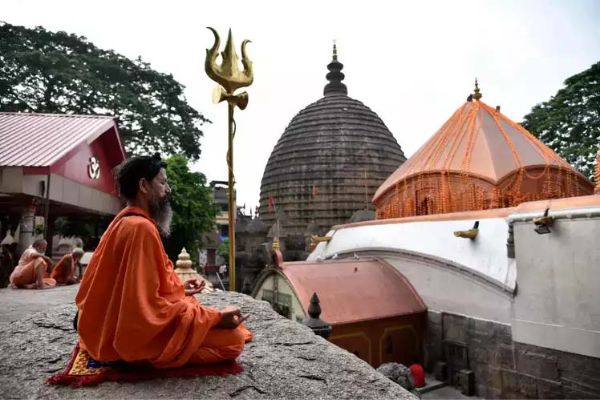Kamakhya Temple Guwahati is a Sakta temple devoted to the mother goddess Kamakhya, one of Goddess Parvati’s appearances. It may be seen on Nilachal Hill in Guwahati, Assam. It is one of the oldest and most revered Tantric practice places, as well as the location of the Ambubachi Mela, an annual event commemorating the goddess’ menstruation. here is also one of the 51 Shakti Pithas, and here is where Goddess Sati’s body pieces fell after she immolated herself.
Significance of Kamakhya Temple
The temple is well-known for its devotion of the yoni, or female genitalia, which is placed in natural stone and clothed in scarlet. The yoni represents the goddess’s creative power as well as her sexual yearning. Kali, Tara, Tripura Sundari, Bhuvaneshwari, Bhairavi, Chhinnamasta, Dhumavati, Bagalamukhi, Matangi, and Kamalatmika are among the ten Mahavidyas of Saktism.
Ambubachi Mela takes place every year when Maa Kamakhya, the mother of Shakti, goes through her annual round of menstruation. It is also said that during this time, the monsoon creative and nurturing power of Mother Earth’s menstruation becomes accessible to devotees at this location. During Goddess Kamakhya’s menstruation, the doors of Maa Kamakhya Temple are closed for three days.
The Kamakhya Temple Guwahati went through numerous rebuildings and reconstructions throughout the course of its long and rich history, which began from the 8th and 9th centuries CE. Several Kamarupa dynasties, including the Mlechchhas, the Palas, the Kochs, and the Ahoms, supported it. Naraka, the fabled creator of Kamarupa, was linked to Kamakhya as his consort in the Kalika Purana, a document written during the Pala era.
Shaktism worshippers frequently go to the shrine, particularly those from Bengal. Worshipping Kamakhya is thought to bring about a number of blessings, including the removal of black magic, the ability to attract love, the ability to sway other people’s opinions, and success.
